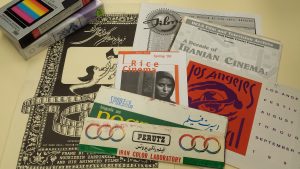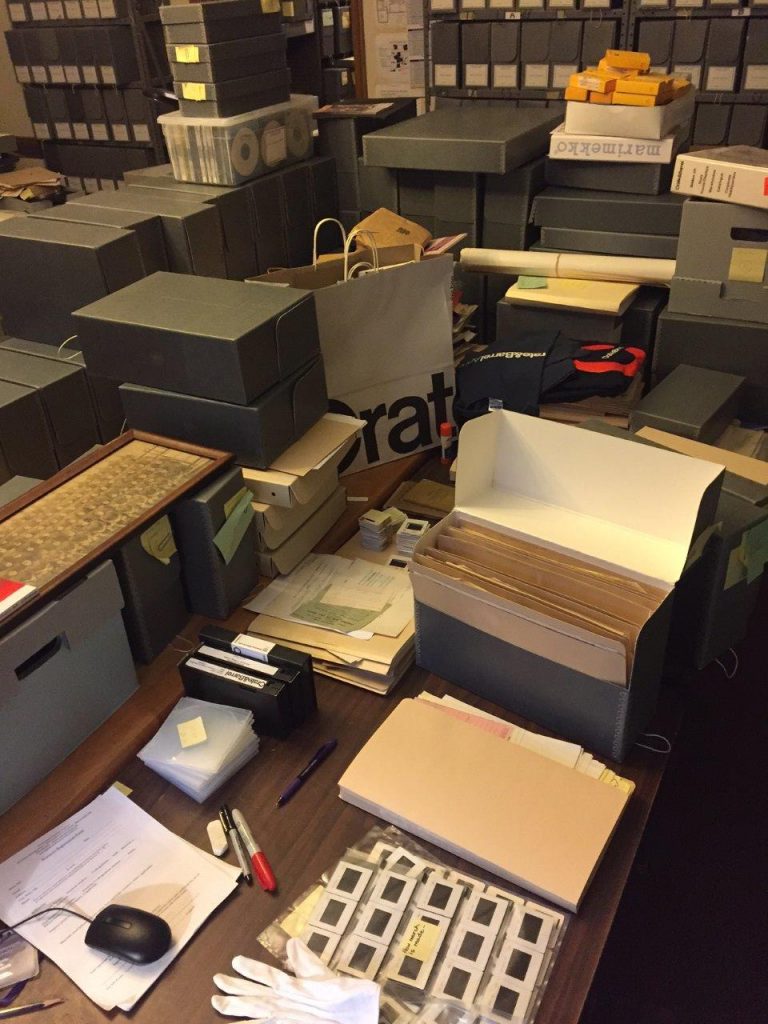
It’s National Archives Month! But you knew that, right? Chicago Collections and the Chicago Area Archivists have adopted the theme of “Hidden Stories” for Archives Month 2017, so we thought it would be appropriate to publish a series of blog entries highlighting NUL’s very own array of Distinctive Collections units. For those who have never had a chance to tour or collaborate with these units, we offer a behind-the-scenes look at each of the mysterious entities whose treasures are hidden in plain sight.
By Benn Joseph, Head of Archival Processing
The Archival Processing (AP) unit is the newest member of the Distinctive Collections workgroup at Northwestern University Libraries, and provides arrangement, description, physical processing, born-digital, and other collection management-type services to the Northwestern University Archives, Charles Deering McCormick Library of Special Collections, Transportation Library, Herskovits Library of African Studies, Music Library, and Art Library. 
Much of what makes Distinctive Collections unique is the array of collections that are, well, distinctive! Whereas books, journals, and other published materials may be found at (or requested from) a variety of research institutions, particularly with the help of a skilled research librarian, there are also multitudes of unique archival and manuscript materials that are available only here at Northwestern University Libraries. And since it’s not uncommon for these collections to be quite large (50 boxes or more!), it’s helpful for researchers to have some kind of list of what’s in each box. It’s also helpful to have a description of the person or organization who created or collected the materials in those boxes, as well as some insights as to how those materials fit in with similar collections at Northwestern and elsewhere. This description and accompanying list is called a finding aid—and you can search all of the finding aids for Northwestern’s archival collections here.
 For those of us working in Archival Processing, our job is to create those lists and descriptions. And since these materials can vary widely depending on what the Distinctive Collections curators bring in (anything from papers in a box to computer files on a hard drive), each project can be as unique as the materials themselves. To manage the complexities of these projects, AP staff rely on established archival standards for arrangement and description—that way we’re able to keep the information in our finding aids consistent, which makes our collections easier to use for researchers.
For those of us working in Archival Processing, our job is to create those lists and descriptions. And since these materials can vary widely depending on what the Distinctive Collections curators bring in (anything from papers in a box to computer files on a hard drive), each project can be as unique as the materials themselves. To manage the complexities of these projects, AP staff rely on established archival standards for arrangement and description—that way we’re able to keep the information in our finding aids consistent, which makes our collections easier to use for researchers.
Collections come to us here in Archival Processing for work to take place, but return to their homes in other areas of Distinctive Collections once they’re ready for use. If you’re ready to use them, here’s where you can start!

